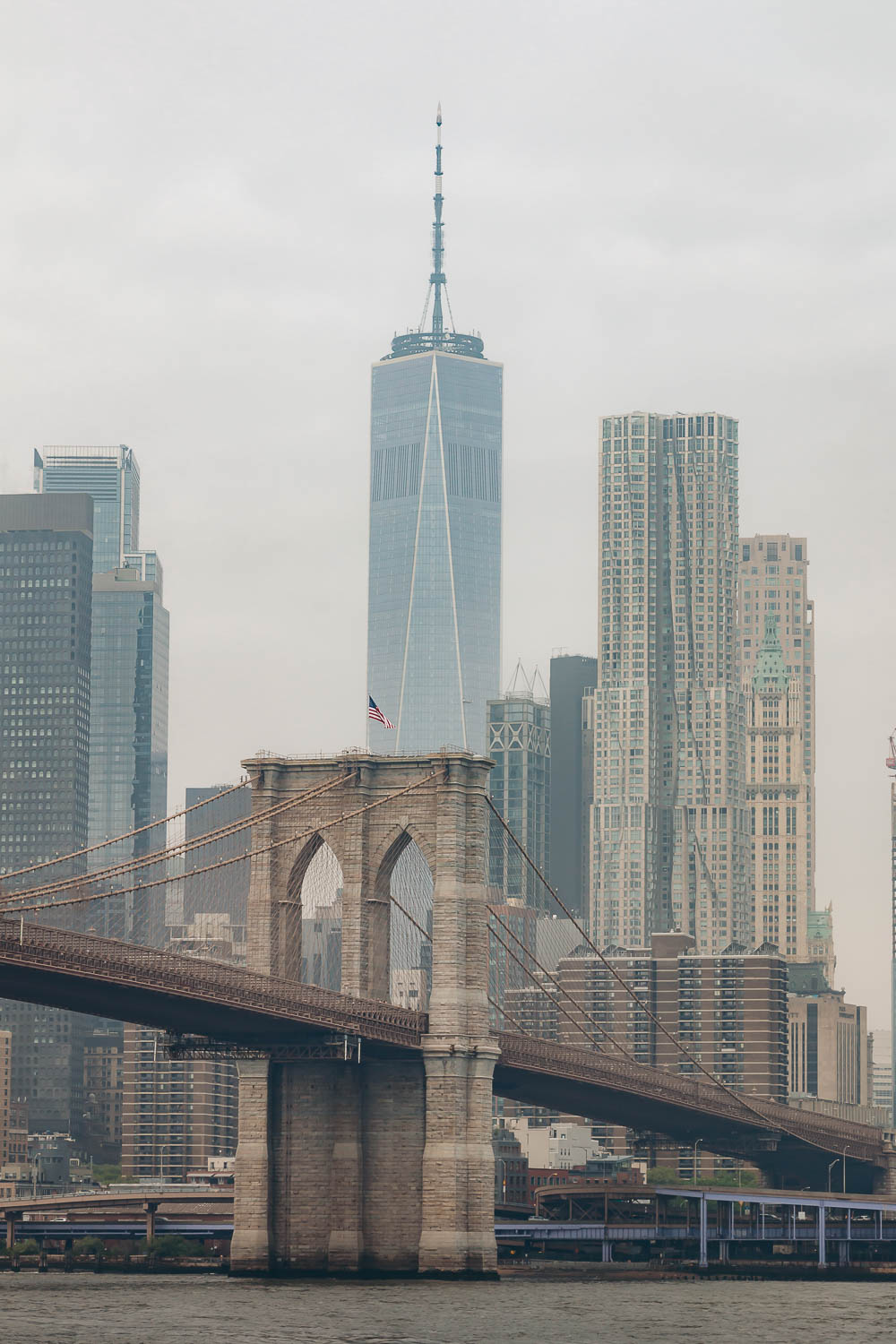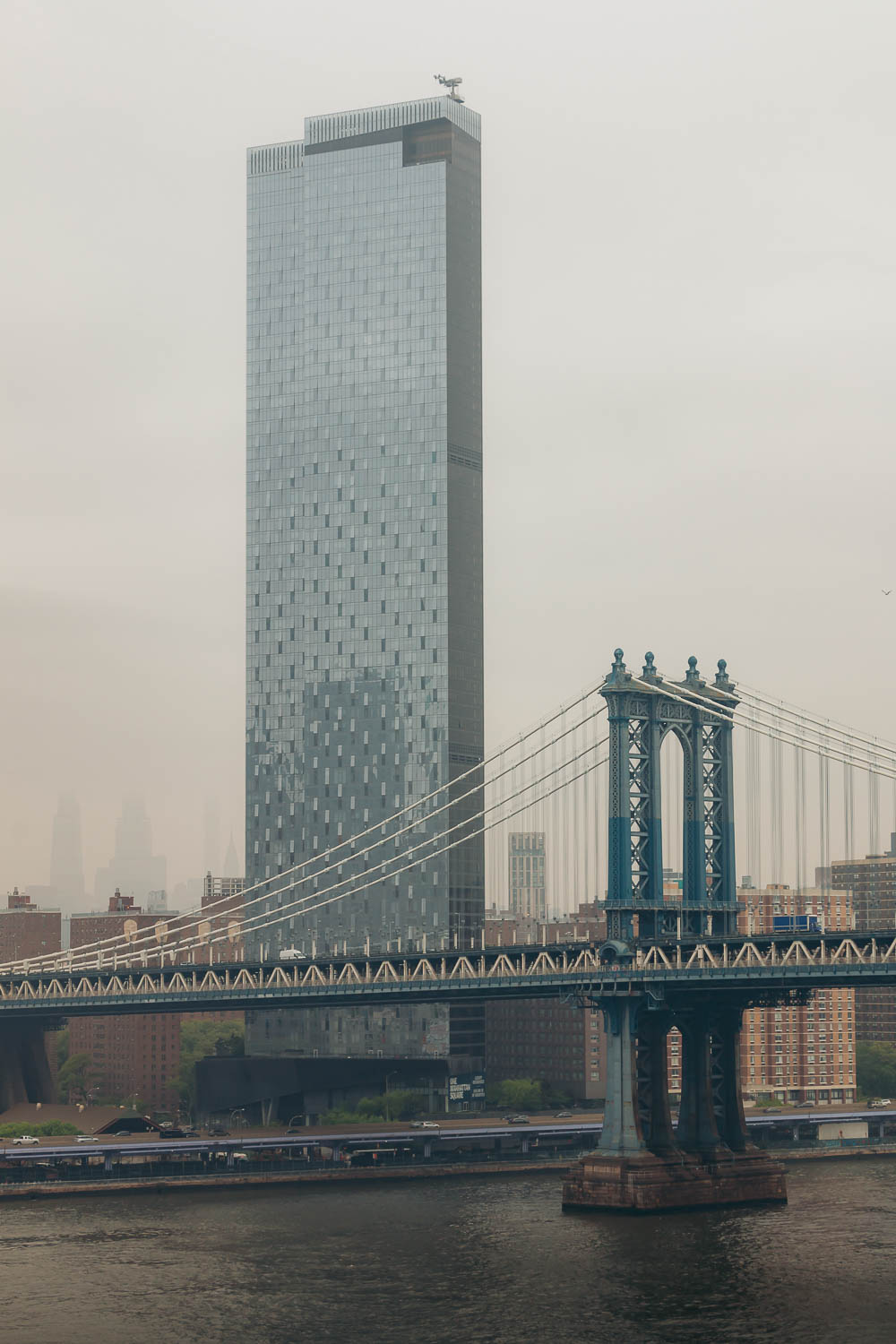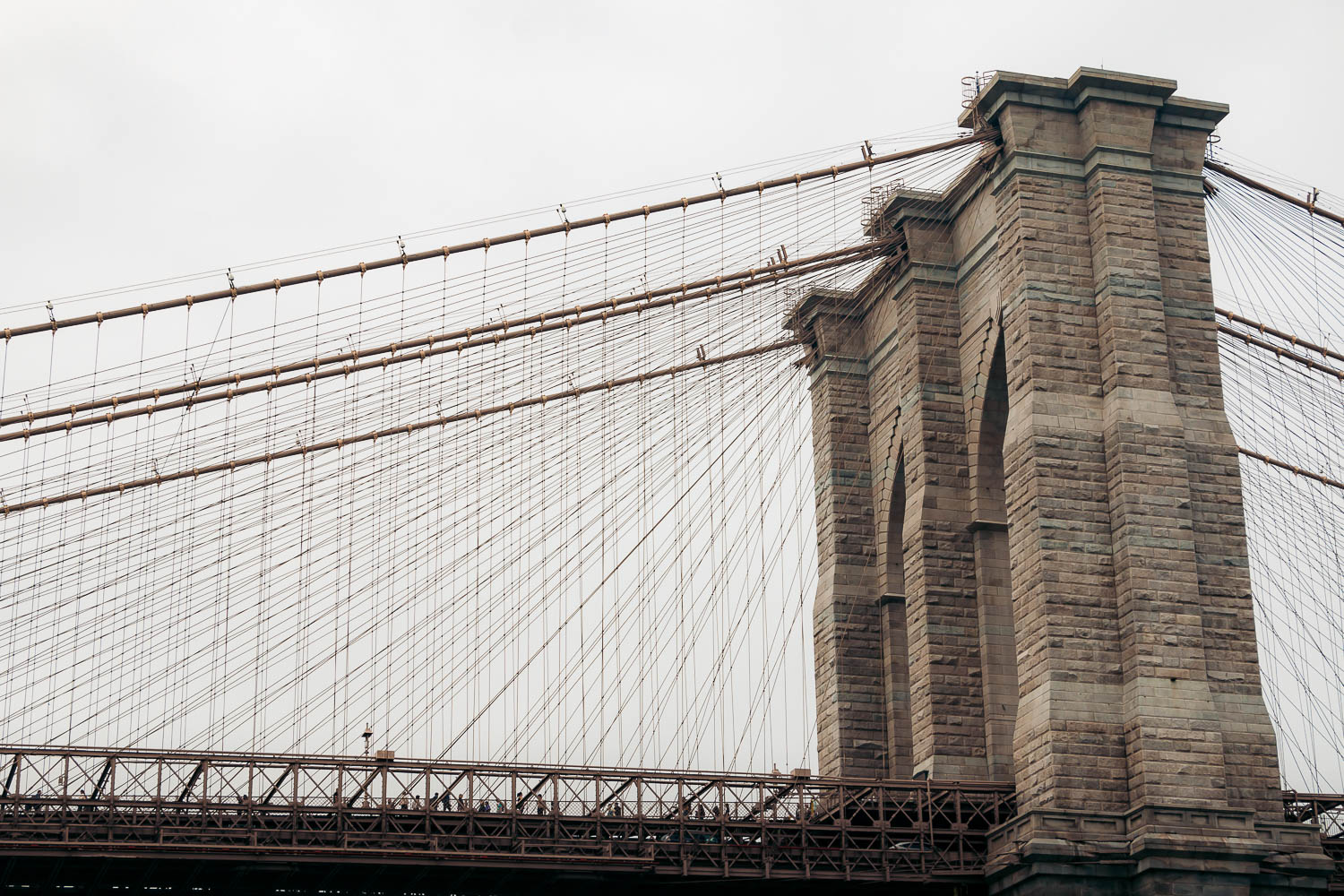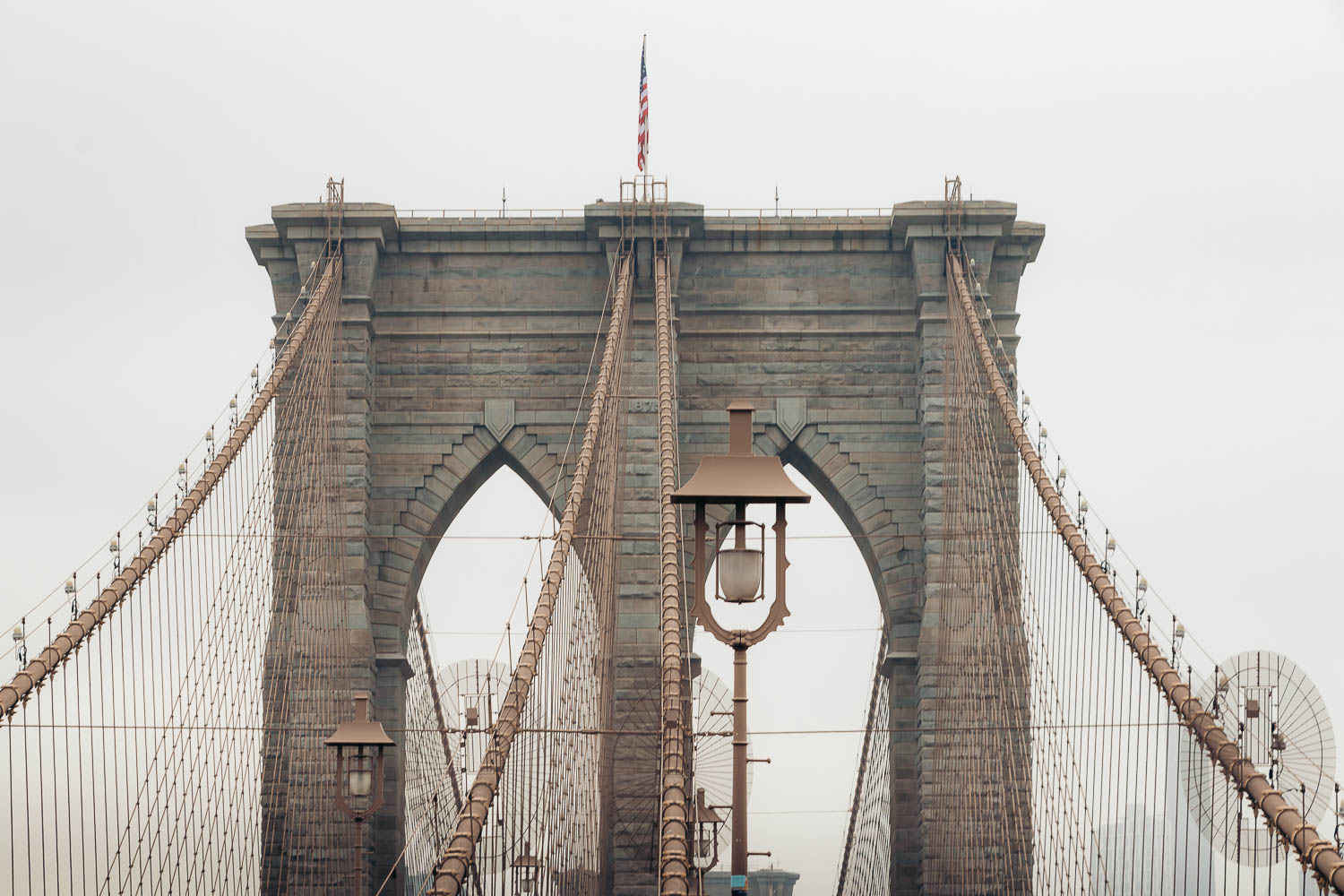I wanted to do just a few things in New York City this time around. Walking from Manhattan to Brooklyn across the Brooklyn Bridge was one of them.
Last updated: March 21, 2025
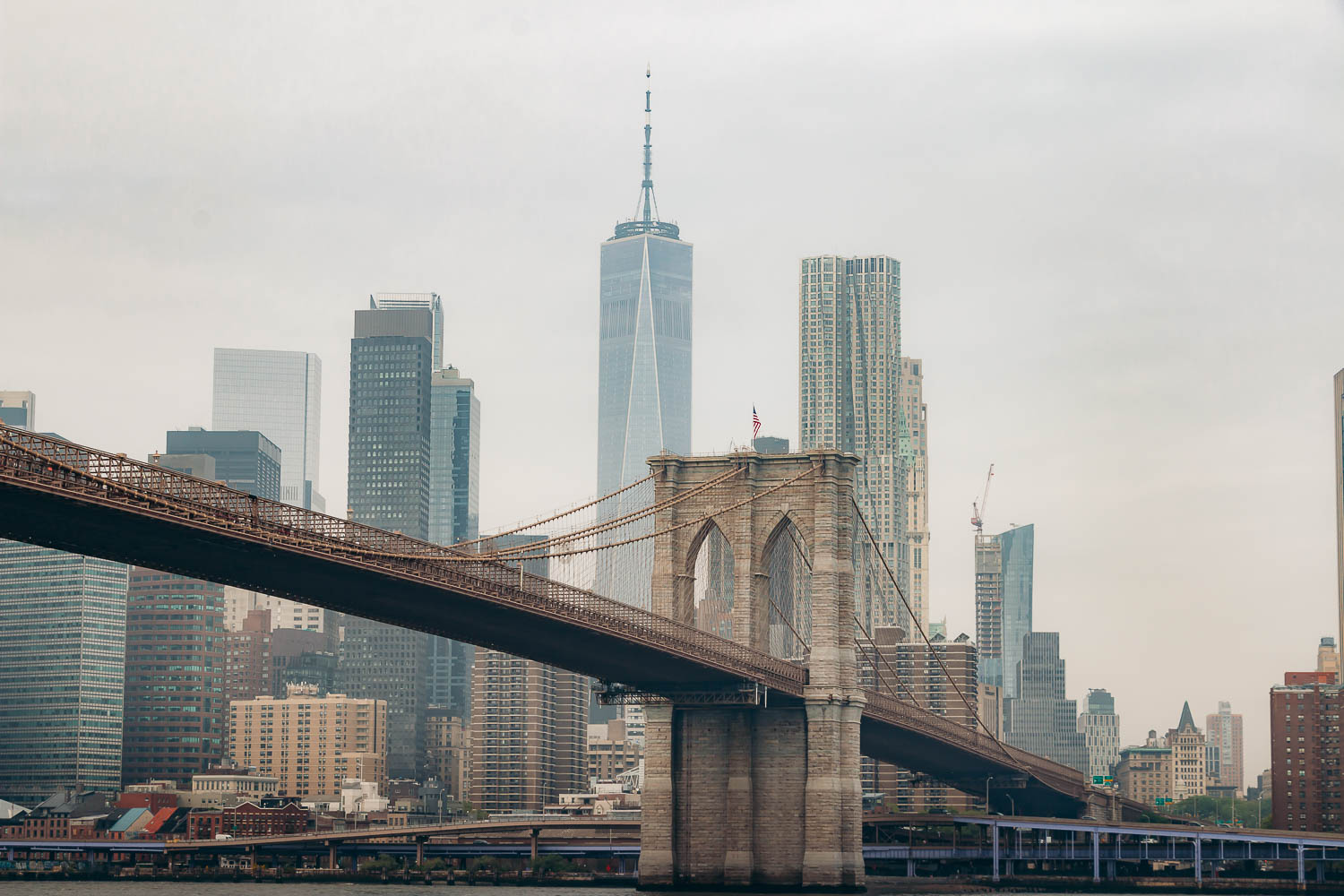
There Is Something about New York’s Iconic Bridge
No bridges excited me as much as the Brooklyn Bridge did. Not even the wobbly Capilano Suspension Bridge that taught me how to embrace rainy days and hot chocolate – two things that go together like salt and pepper – of Vancouver in British Columbia, Canada.
Years after I had first visited New York and quite some time before I returned to the Big Apple, a drastically different “bridge” grabbed my attention.
Not as architecturally-decorated and capable of holding loads of cars and pedestrians as the Brooklyn Bridge, the Devil’s Bridge is a natural rock formation that rises high above a desert skyline in Arizona. Yet similar to some of the world’s most popular bridges, the area is normally crowded.
Having never walked across the Brooklyn Bridge before, I expected the place to be as busy as Arizona’s natural attraction. Much busier, in fact. Yet secretly hoping to avoid the usual crowds, we made sure to arrive at the Brooklyn Bridge Pedestrian Walkway on the Manhattan side in the morning.
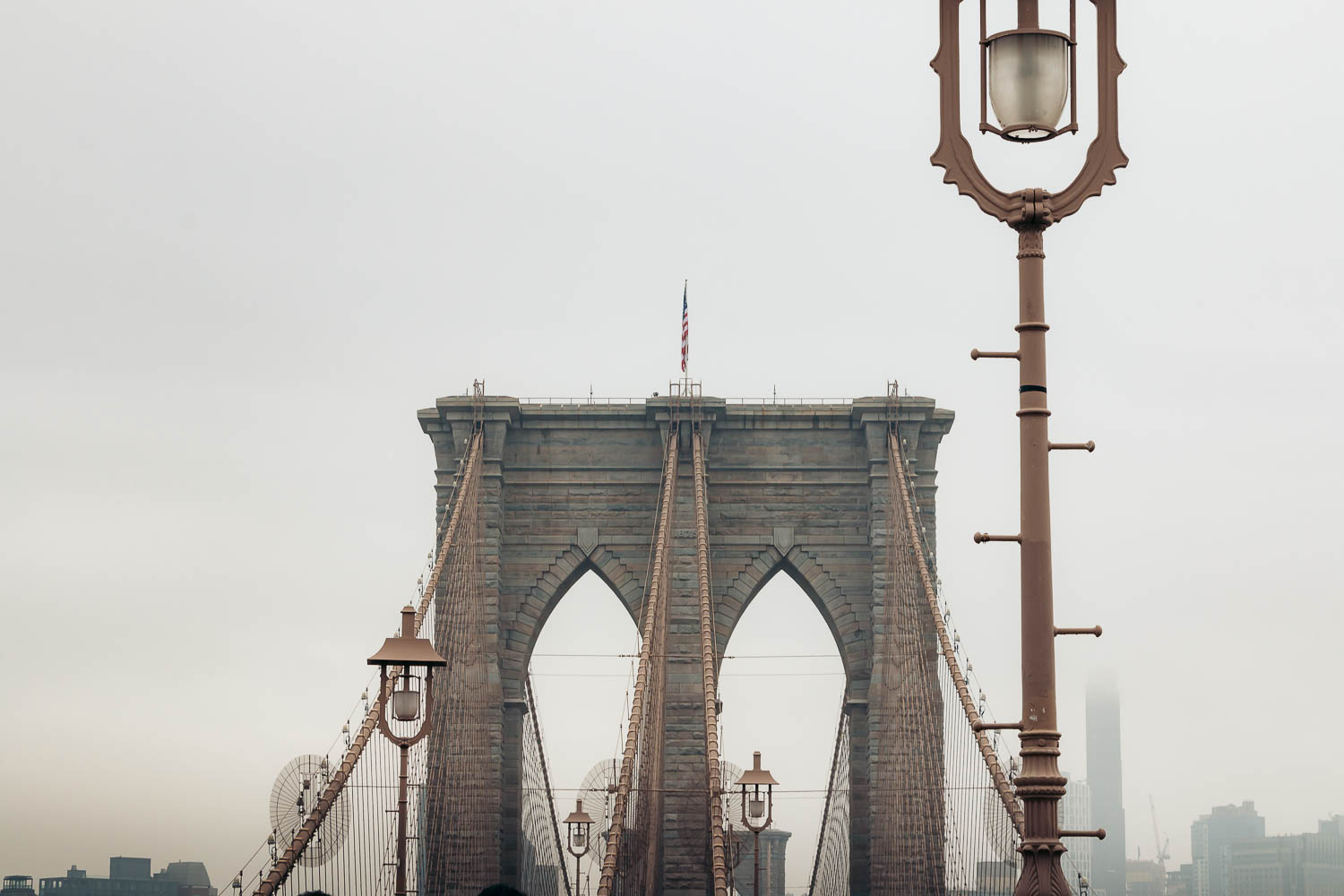
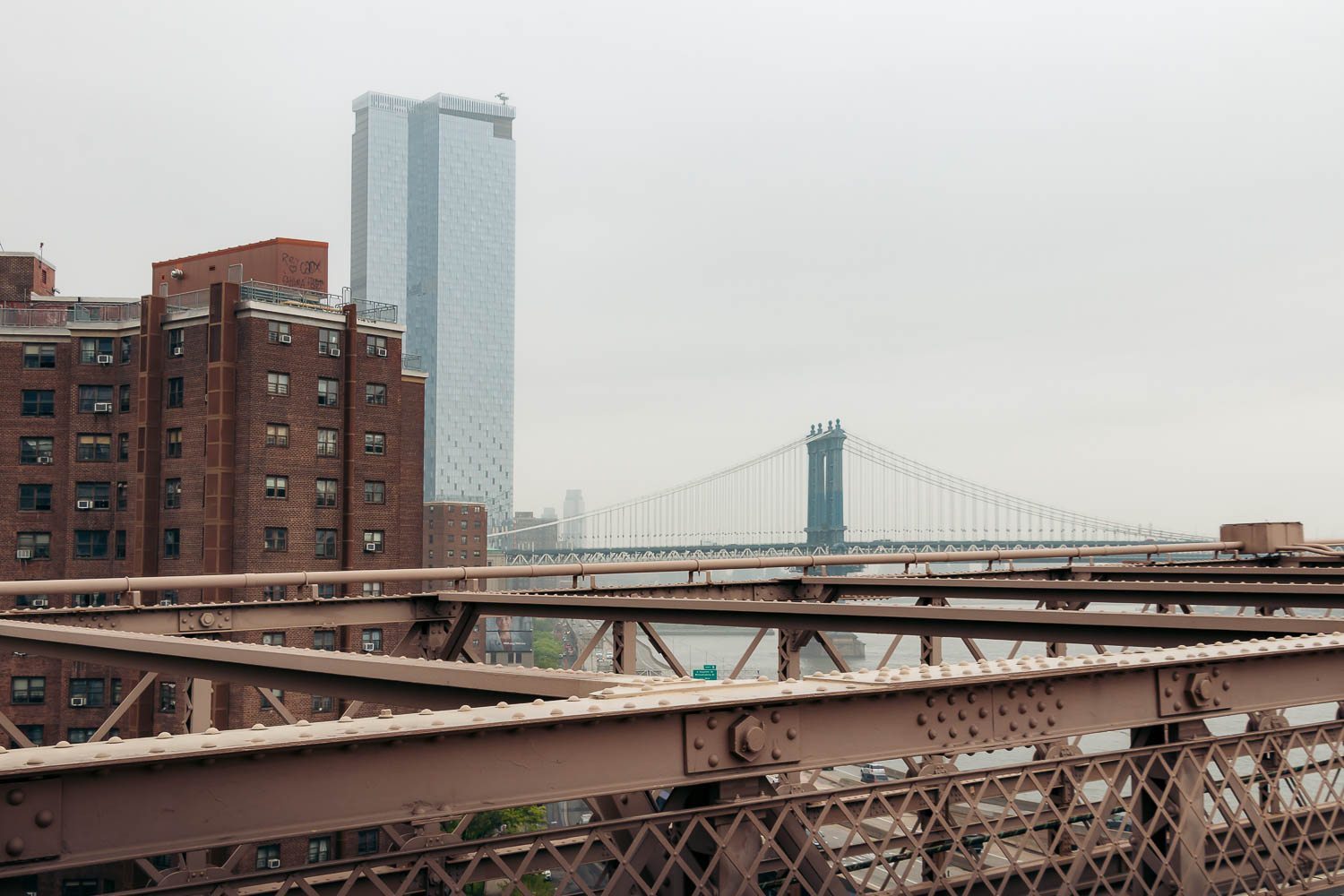
Walking Direction to Brooklyn Bridge (from Brooklyn and Manhattan)
Like the majority of the bridges (the above-mentioned Devil’s Bridge would be an exception), the Brooklyn Bridge has two entrances and a wide upper deck for pedestrians to walk across.
Walking across Brooklyn Bridge from Brooklyn
It’s somewhat tricky to find the Brooklyn Bridge entrance on the Brooklyn side. The neighborhood has quite a few attractions nestled in the same area with some confusing directions (at least for first-time Brooklyn Bridge walkers). Nevertheless, it offers a few options to enter the bridge.
The easiest way is to look for the Brooklyn Bridge Pedestrian Walkway at the intersection of Tillary Street and Boerum Place. You can access the walkway from the staircase located in the underpass on Washington Street and Prospect Street, at the northeast corner of Cadman Plaza.
Alternatively, you can walk onto the bridge from Adams Street. The Brooklyn Bridge Promenade on the Brooklyn side begins at the intersection of Tillary Street and Adams Street.
Walking across Brooklyn Bridge from Manhattan
The direction to the Brooklyn Bridge pedestrian walkway in Manhattan is a lot more straightforward. The entrance is located along Centre Street, across from City Hall Park. If you take public transportation, get off at the Brooklyn Bridge/City Hall subway station, which is served by the 4, 5, 6, and Z trains.
TIP: Considering New York’s distances and traffic, taking a train can be faster than taking an Uber or taxi. And it can save you tons of money. The subway fare in New York is $2.90.
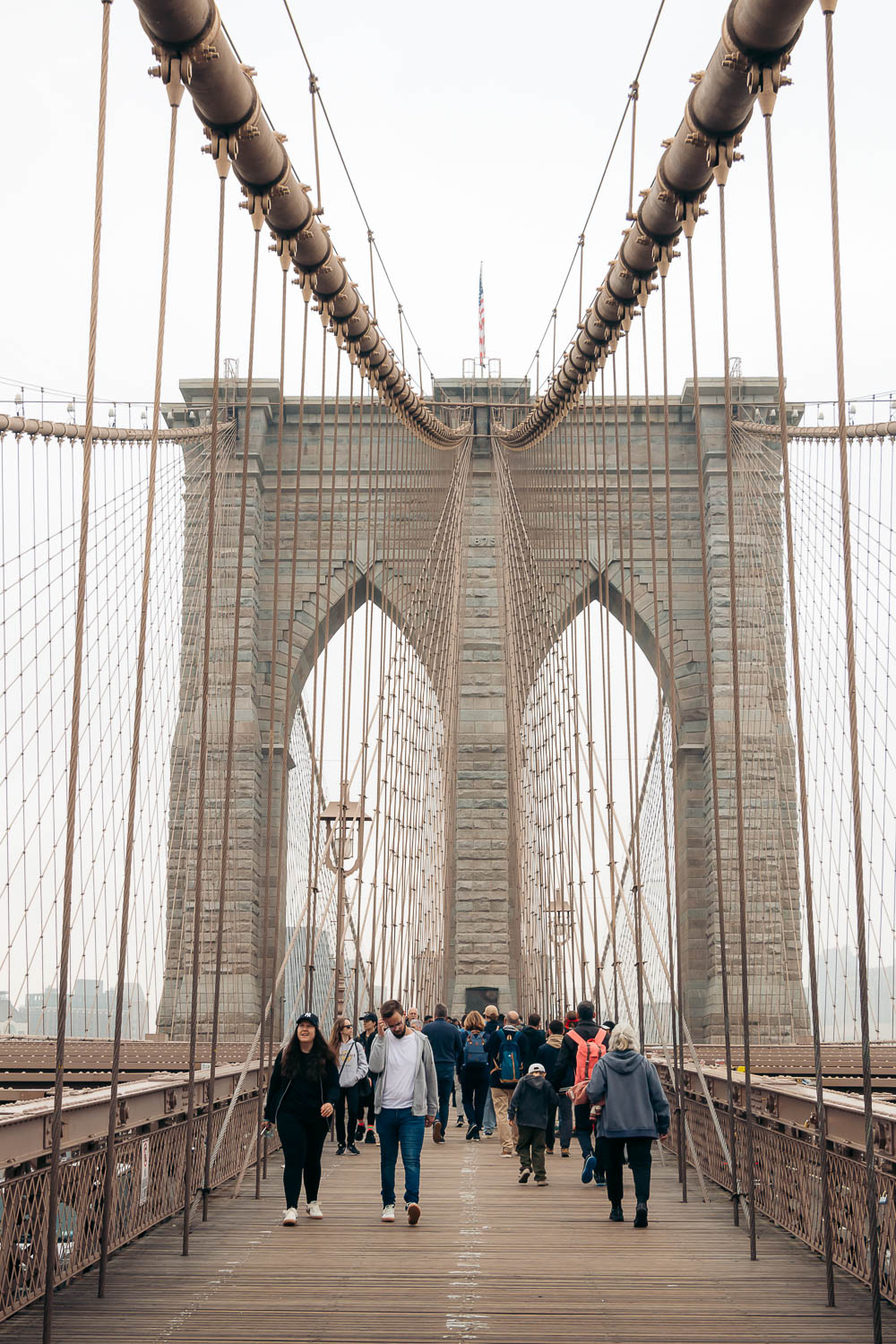
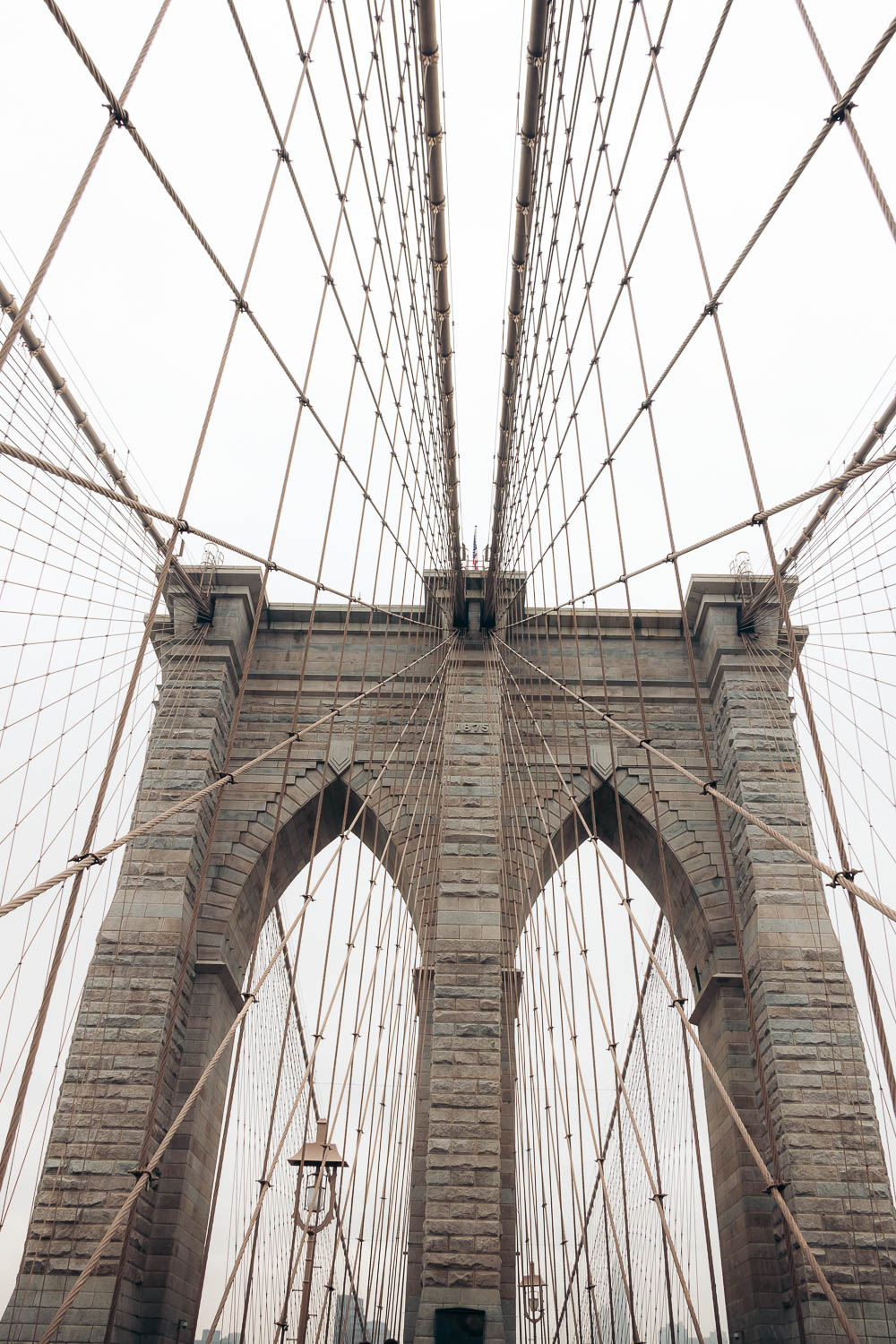
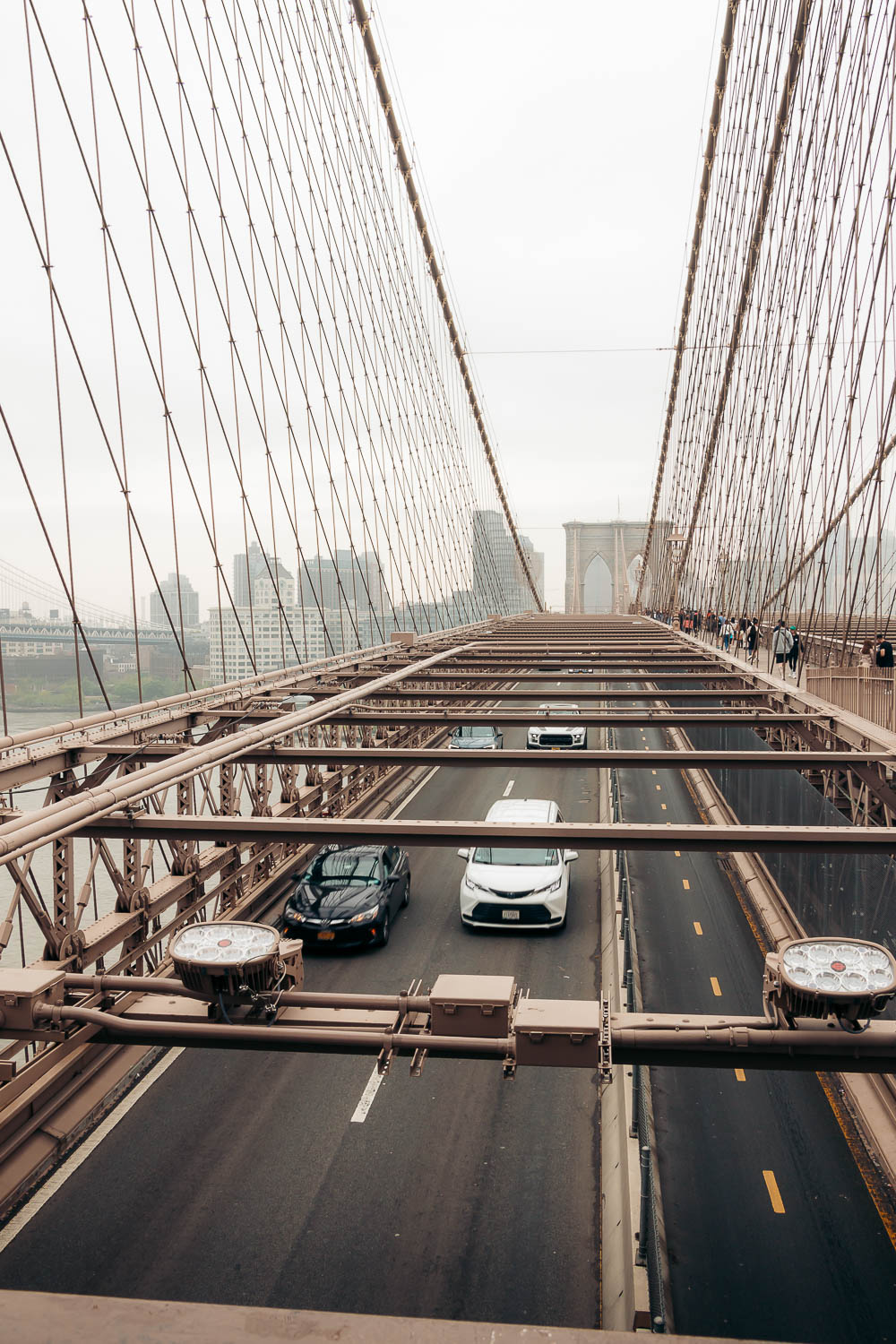
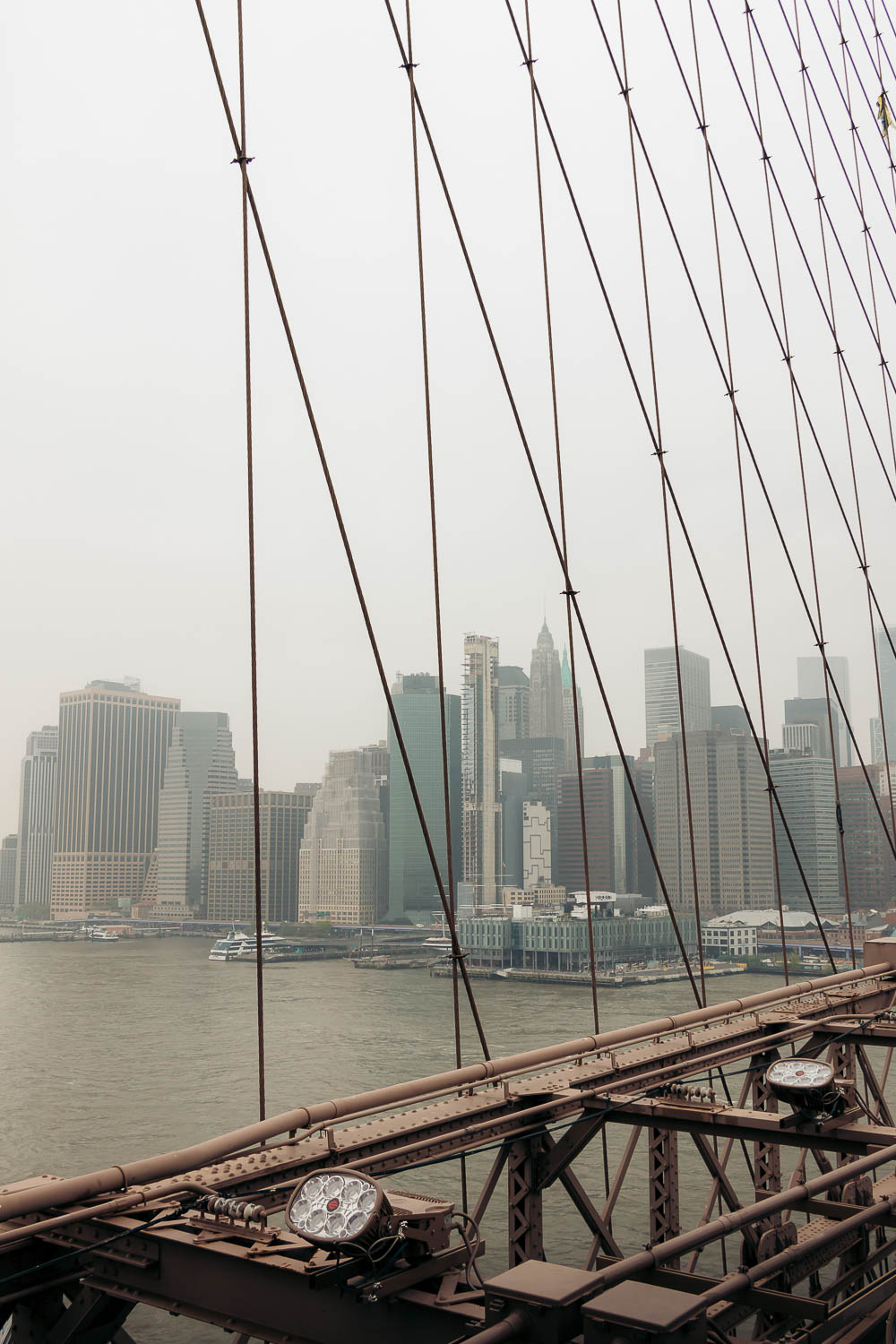
Walking from Manhattan to Brooklyn via Brooklyn Bridge
Heavy clouds covered the sky over New York City on a Monday morning when we arrived at the Brooklyn Bridge Promenade on the Manhattan side. It was neither the wee hours nor even mid-morning, but the Brooklyn Bridge was packed.
Based on pedestrian’s slow pace and many stops they made to take photos, it was obvious that the majority of the Brooklyn Bridge’s walkers were visitors. Passing by in a businesslike manner, locals were easily detectable in the crowds of the onlookers.
According to metal plaques affixed to the structure, the Brooklyn Bridge is 3,461 feet long and rises 155 feet from the river below the steel cable work. (Different sources give different lengths of the bridge. Yet they seem to agree on one thing. The Brooklyn Bridge is about 1.1 miles long.) The distance between two suspension towers is approximately 1,596 feet.
Known for its impeccable architecture depicted in two imposing towers with distinct stone aches, the suspension bridge spans the East River and connects Lower Manhattan and Brooklyn Heights.
It takes approximately 25 minutes to walk from one end of the Brooklyn Bridge to the other. The time, however, depends on your speed and intention. Photographers and first-time visitors normally spend at least an hour on the bridge, stopping frequently to take in iconic views of New York’s skyline.
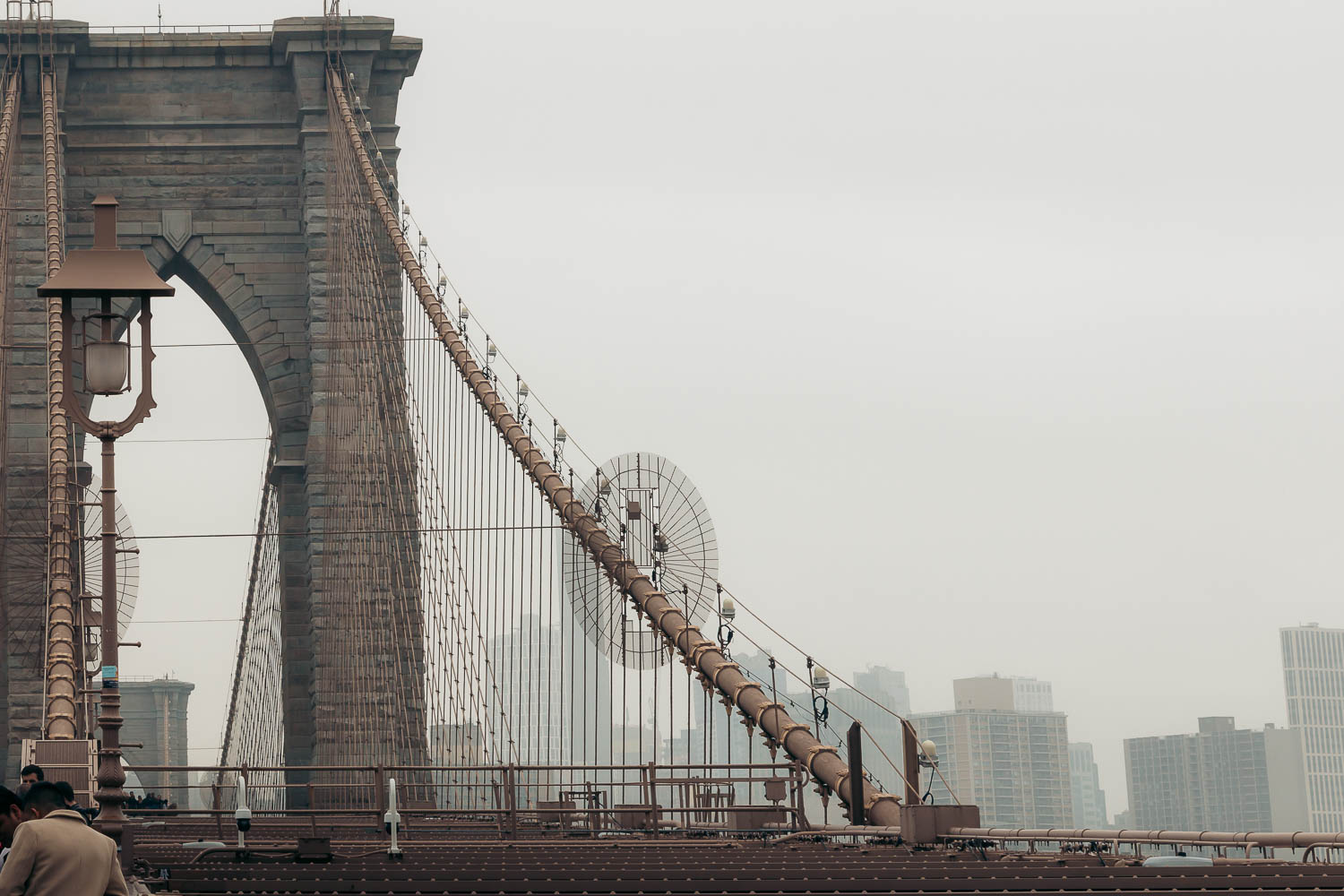
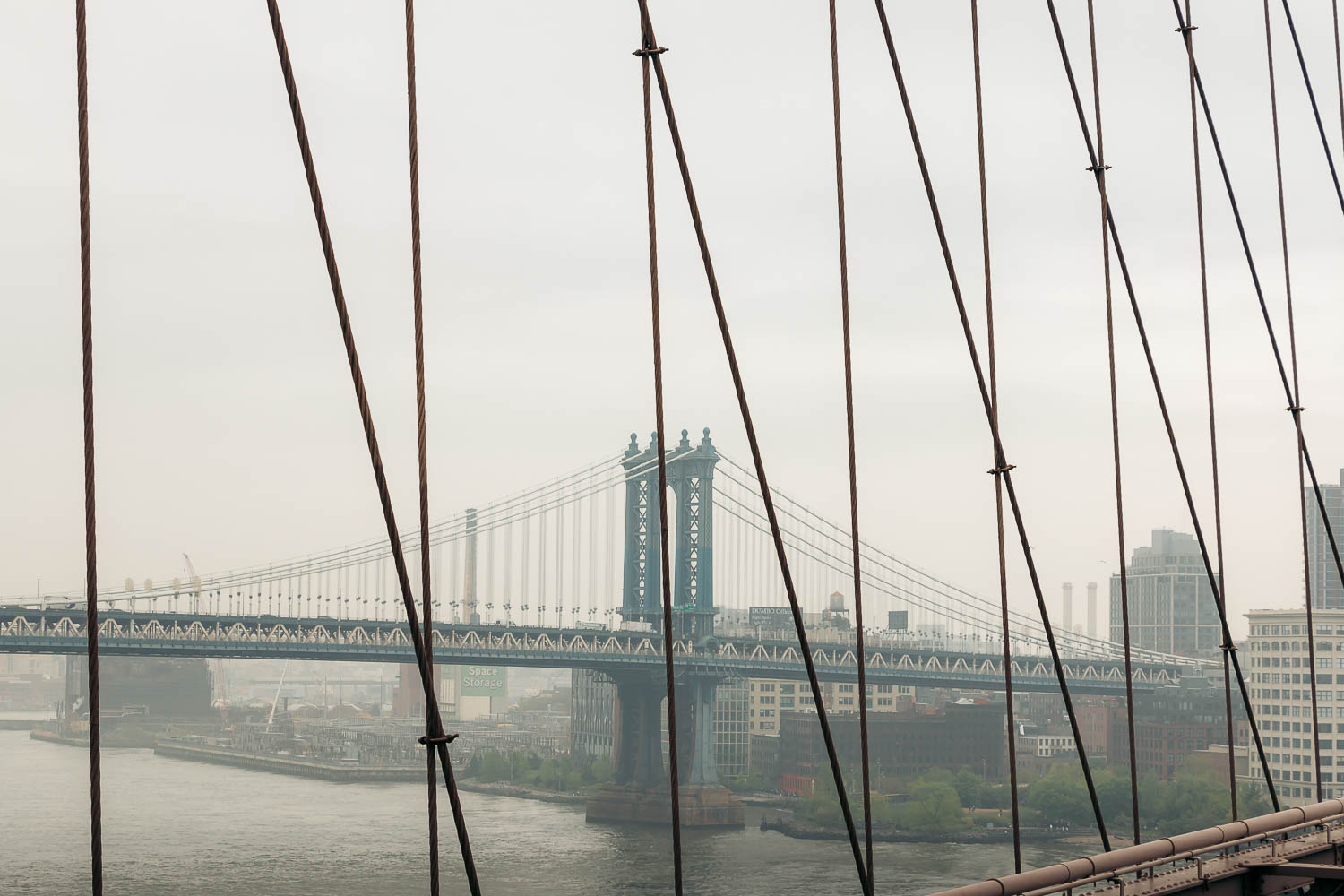
Why and When Was the Bridge Built?
In the mid-1800s, one third of residents of Brooklyn (then a separate city) traveled across the East River to New York City for work by ferry. This type of transportation had a major flaw, especially when the river froze over. The cities were looking for a solution.
Around this time, the eminent engineer John Augustus Roebling presented his design for a massive suspension bridge that would connect Brooklyn and Manhattan. The plan was approved in February 1867.
The construction of the Brooklyn Bridge began two years later (some sources say three years). It took 13 years (14 years according to different sources) to finish the colossal project. At that time of its completion (1883), the Brooklyn Bridge was the longest suspension bridge in the world.
The grandiose undertaking took 27 lives, including Roebling himself. The renowned engineer died from tetanus that he contracted when his foot was crushed in an accident on site.
The Brooklyn Bridge was opened on May 24, 1883 and has played a vital role in the daily commute of New Yorkers ever since.
The Best Time to Walk across Brooklyn Bridge
The Brooklyn Bridge is never desolate. People walk across the iconic structure of New York City early in the morning, swarm at the bridge in the afternoon, and admire city lights from it in the evening. Some flock to the Brooklyn Bridge at night when huge crowds disappear and some sort of serenity (never complete) returns.
During weekdays, the best time to walk across the Brooklyn Bridge without fighting your way through or squeezing in to find a good vantage point is early morning (before rush hour, which is sometime from 6 to 8 a.m.), early afternoon, and late evening (after 8 p.m.).
On weekends, the Brooklyn Bridge remains relatively crowd-free until 9 a.m.
